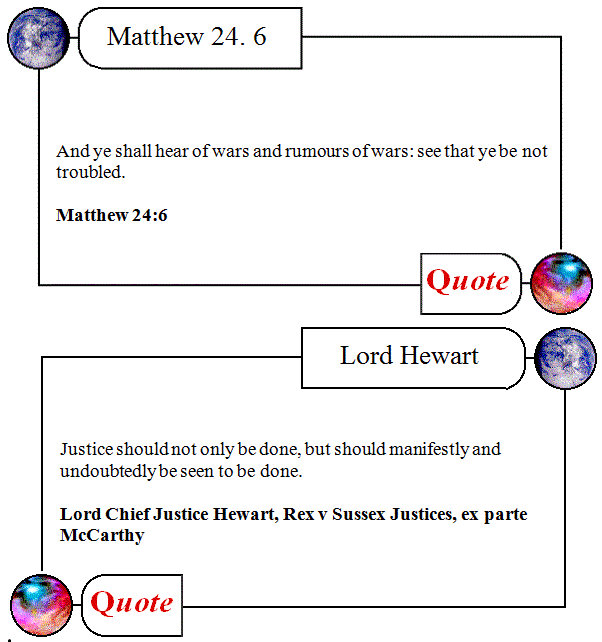Part I.
As I mentioned in my last post, I will be analyzing Anne-Marie Slaughter’s ideas about “Responsibility to Protect“doctrine, based on her Stanford Journal of International Law article, “Sovereignty and Power in a Networked World Order” in a series of posts order to better understand and critique the assumptions on which R2P rests. Before I begin, some caveats:
Reading these posts is no substitute for reading the article yourself and drawing your own conclusions. A truly remarkable paper of some 44 pages of academic prose, a blog review of Dr. Slaughter’s thesis, even in a series, will only be able to focus on her operative premises and not delve into every shade or nuance. Limitation of the medium, but readers are free to disagree or agree in the comments.
Dr. Slaughter is an IR theorist and international lawyer of eminent stature and her style of argumentation reflects both the strengths and the weaknesses of those fields.
On the empirical issue of general, trends in international affairs and conflict, I do not take issue with Dr. Slaughter’s assumptions about the rise of networked non-state actors, greater degrees of uncertainty, complexity and multipolarity among and within states and the systemic erosion of state legitimacy. Indeed, in a broad and fundamental sense, I share them as I think do most people studying irregular conflict, counterinsurgency, 4GW and hybrid wars. I take exception though to the truly radical legal and policy conclusions Slaughter draws from these trends, as well as her normative delight in their trajectory. It as if we both agree that the Westphalian house is on fire, but she is reaching for a jerrycan of gasoline in order to speed the process along.
Finally, in this series I intend to tackle her argument from a thematic perspective, addressing how Slaughter views core philosophical questions of authority, international law, sovereignty, legitimacy and power in inventing a “responsibility to protect” doctrine and what the logical extrapolation of her ideas entails. Slaughter structured her article differently, with these concepts interwoven as she made her case in five sections, with sovereignty being a dominant concept.
The first post will concentrate on Slaughter’s premises regarding the problem facing the international community and her proposed solution:
An excerpt from Dr. Slaughter summarizing her thesis in her introduction:
….Westphalian sovereignty faces two fundamental challenges in contemporary international relations….First, the ineffectiveness challenge….A State’s ability to control its own territory without external interference is no longer sufficient to allow it to govern its people effectively – to provide security, economic stability and a measure of prosperity, clean air and water, and even minimum health standards.
Second, is the interference challenge. The letter of Article 2(7) remain; the spirit is violated repeatedly and increasingly routinely. All of human rights law deliberately infringes on the domestic jurisdiction of every state, denying governments the freedom to torture, murder, “disappear”, or systematically discriminate against their own citizens. Moreover, throughout the the 1990’s the Security Council repeatedly found that the conditions prevailing within a state, from starvation in Somalia to political intimidation and massacre in East Timor, constituted a threat to international peace and security sufficient to require collective armed intervention, and should have made such a determination regarding the genocide in Rwanda. States can no longer assume that if they refrain from interfering in the affairs of other states they will remain free from interference themselves.
….In short, states can no longer govern effectively by being left alone. The converse proposition is equally true, although perhaps more startling: States can only govern effectively by actively cooperating with other states and by collectively reserving their power to intervene in other states’ affairs. The world has indeed turned upside down: small wonder that the concept of sovereignty needs to be redefined!
Startling, is a good description.
Slaughter’s first “fundamental challenge” pivots on an odd usage of the word “effective”. “Effective governance” here is defined by Slaughter as something other than a state’s actual physical control over the territory and population over which it asserts sovereignty. Explicitly, “effective governance” is then defined as the provision of modern public goods, presumably without resort to autarkic policies, as interdependence is one of her themes.
To be fair to , there’s some merit to Slaughter’s consideration of the provision of public goods. States that face non-state actor challengers like Hezbollah who do fill social needs are thwarting their state opponents at the moral as well as the material level of conflict, winning over their loyalty and eroding the legitimacy of the state. So, if Dr. Slaughter was writing a manual on, say, psychological warfare or insurgency, she would have me on board here.
But, unfortunately, she isn’t. Slaughter is writing an article, ostensibly on international law, and a vague laundry list of economic items, a transient de facto state of public policy, strikes me as a poor foundation for a universal principle of law. By Slaughter’s standard, Mexico which provides public services, is democratically governed and economically interdependent despite being strangled by a narco-insurgency of atavistic brutality, is “effectively governed”. Lebanon, whose government in is under the hegemony of Hezbollah is “effectively governed”. There’s a subsumed “correct” political economy embedded in the argument here by Slaughter; if a first world state decides to reject carbon footprint taxes, nationalized health care or privatizes it’s mail delivery, is it “ineffectively governed”?
At least the first challenge is relatively straightforward. Slaughter’s second “fundamental challenge” is an exercise in logical acrobatics.
Slaughter is correct that the spirit and at times the letter of international law (actual, real world, international law that has a chance of being followed, not R2P theory) is stretched to justify military intervention. She is also right that Rwanda’s genocide by the then radical Hutu regime constituted a threat to international peace and cried out for intervention, and the failure to do so resulted in not just genocide of the Tutsi people but ultimately an African WWI in the Congo basin. These two factually accurate examples are diametrically opposed to one another, yet somehow, they combine to arrive at the solution of institutionalizing military intervention in international law as a rule and not an exception. They are juxtaposed with the cases of Somalia, where no state, legitimate or otherwise, existed and East Timor, which was a case of de jure military aggression and annexation by Indonesia. The only thread tying all of these disparate examples together is a large pile of dead bodies.
Charnel house examples make for bad law, unless you have to govern a society of cannibals.
Finally, while boldly rejecting international law’s long established definition of sovereignty, Slaughter offers two easily falsifiable assertions, that states can no longer govern effectively by governing alone and that the ever present danger of arbitrary meddling by foreigners is a prerequisite for good governance. If so, Switzerland would be a Hobbesian hellhole today and Central America and the Caribbean islands would resemble tropical Singapores . The omnipresent threat of foreign meddling on religious grounds is what states ran away from screaming after the Thirty Year’s War, which may have killed up to a third of all the people in the Germanies.
Anne-Marie Slaughter proposes to restore that state of affairs on more secular grounds.
Next post – Slaughter on Authority and International Law.
ADDENDUM – Related posts:
Inkspots –R2P is NOT the new COIN, but Ulfelder is just as wrong as Safranski about why*
Fear, Honor and Interest –Geopolitics, Networks, and Complex Friction

 a “
a “




